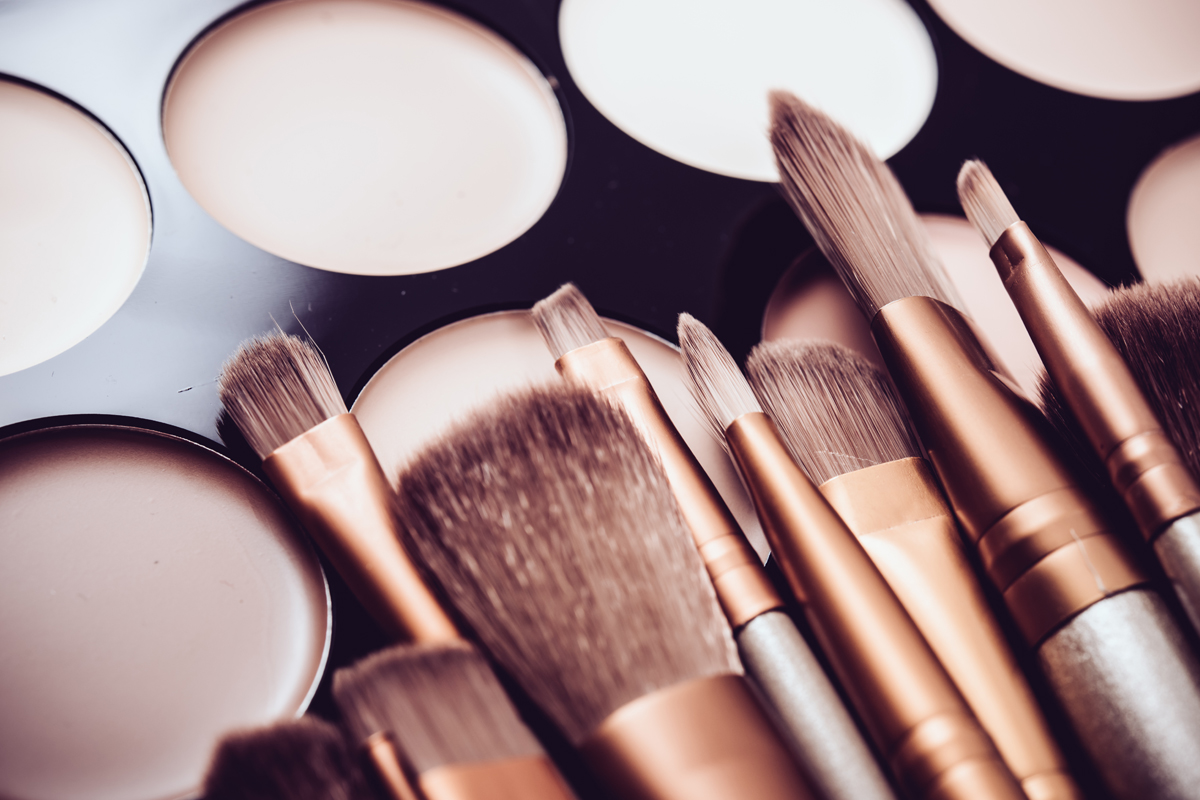From essentials to organization tips
Building a great makeup kit that meets the needs of you and your clients takes time, money and careful planning. It will say everything about you in terms of who you are as a professional, and it requires an ongoing process of updating, editing and cleaning your products and tools, to make sure that you are able to work efficiently, safely and effectively.
WHERE DO I START?
Start by knowing who your clients are and what kind of jobs you actually do. The needs of an artist who works on weddings is different from the professional who works on commercial jobs for photography or film.
For example, in commercial work, you would want to include male grooming products, like a matte lip balm, shine-controlling products and small clippers. The wedding makeup artist is more concerned with longevity, so waterproof liners, powders and setting sprays are a must.
[ihc-hide-content ihc_mb_type=”show” ihc_mb_who=”2,4,5,6,7″ ihc_mb_template=”3″ ]
Another consideration is the context of your work. Are you primarily freelance with the need to be mobile? Then you will want a professional-looking case that is easy to pack and move. Or are you working from one location only, like a salon or your home studio? In a salon, you may be working with a specific line that the shop carries, and will only need to augment with your own brushes and tools. In a private studio, the non-mobile makeup station should be stocked according to the needs of your client base.
WHAT BRANDS SHOULD I USE?
Most working artists’ kits are a combination of professional, premium and lower-end brands. These products are chosen, often through a process of trial and error, because they function effectively on the job.
Professional brands (e.g. Kryolan, Graftobian, Kett, RCMA) serve the needs of all makeup artists, including those in film and special effects. These brands are sold through their websites, stores (MAC, Make Up Forever) or specialty stores that serve the industry. Standouts from brands like these include preparation and setting products, highly pigmented foundation, correctors, concealers and eye shadows, as well as airbrush makeup.
Premium products come from long-established beauty giants, fashion houses, makeup artists and now, celebrity brands. Your clients will recognize these products in your kit because they are widely advertised and available for the non-professional to purchase as well. While there are good options from some of these brands (like long-wearing eye and lip products), you are often paying top dollar for a name, and they tend not to be packaged to fit neatly into a professional kit.
In the past, lower-end or “drugstore” makeup were of little use to the working artist because the pigment level and color range was limited, but in response to the passionate interest in makeup that rose out of social media, some of these brands have shifted their lines to include heavily pigmented, on-trend products. Out of the enormous selection in this category, the most enduring pro favorite is mascara, which needs to be replaced often.
Considering client perception and the advantage to your career of promoting both your expert approach and a luxury experience, it is good practice to limit or down-play your use of low-end products. For example, eye shadow palettes, often customized and painstakingly curated by the artist, are a mainstay of the professional kit. Low-end, YouTuber-endorsed palettes can make you appear amateur. A true pro hasn’t learned to do makeup from social media, which is a form of entertainment, and you will benefit by demonstrating your expertise, rather than how you may have been influenced.
HOW SHOULD I ORGANIZE MY KIT?
A professional makeup artist’s work is limited by space, as well as time, and both are important considerations for how you organize and carry your kit. All jobs have you operating on the clock, and space constraints can be challenging when you need quick access to your products. You should be able to set up and break down your kit with equal speed and efficiency, while paying attention to the sanitation requirements that are more important than ever.
It is impractical to carry more makeup than you need, and too many options can slow down your application, causing you to fall behind and risk client dissatisfaction. Knowledge of color theory and mixing skills help you to carry fewer products, because you can create or adjust shades as needed.
This is most helpful for products like foundation, concealer and corrector, but can apply to any cream or liquid product with the same base ingredient (e.g. silicone or wax). If you feel that your ability to see and mix color needs work, online color theory courses are just a web search away.
Curating your own array of color and texture is the best way to work quickly and efficiently. Eye shadows, blushes and powders, if not available in pan form, can be depotted and put into magnetic palettes, while lip colors can be melted into new multi-compartment containers. You can purchase magnetized containers but if you prefer to do-it-yourself, the craft store is the place to look.
A pristine makeup kit is something to be proud of and will set your client’s mind at ease. Because your kit has to be spotless, you should always have antibacterial wipes, 70% isopropyl alcohol and makeup sanitizing spray handy to clean between clients and before putting products and tools away. Anything that you decant, even if it’s just water, should be clearly labeled.
These are just some of the practical considerations for building a professional makeup kit. Take the time to assess what you need versus what you want, and you will spend less money, use more of what you buy, and always feel well-prepared, no matter what the job requires.
[/ihc-hide-content]













